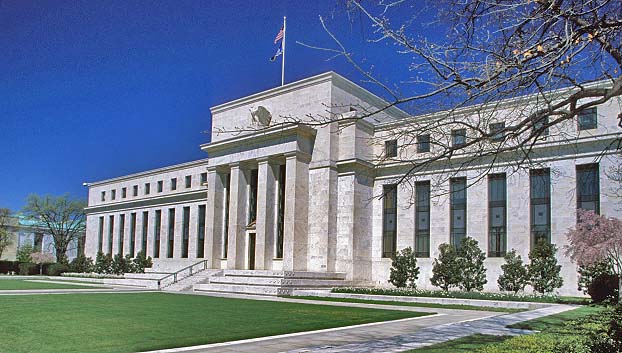
The Federal Reserve Clearinghouse runs the check clearing system in the United States. In this article, we'll explain how the whole system functions, from the beginning to the end of the process. We'll also explain what purpose the Federal Reserve Clearinghouse serves, and why it's such an important part of the financial world.
To make check payments work, banks send out deposited checks everyday to clearing houses, outside groups that specializes in sorting and processing checks, in order to make sure each banking account is properly debited or balanced. The process seems like a simple one at first glance: The bank sends out the checks and they get sorted by an automated system. However, organizing checks is a much more complicated process than it seems. Clearing houses and banks together go through a number of different organizational steps in order to get your money to its proper location. Without several key organisational steps taken by both banks and clearing houses, the quick and accurate crediting and debiting of accounts that we're accustomed to as bank account holders wouldn't be possible.
Processing a check
Imagine that you're ready to buy this lovely, adorable puppy by check for 100 dollars, and you're excited to take him home. You decide to pay by check. When the pet shop cashier to whom you made a check out to takes it to the bank and deposits it in the pet shop's account, the check process begins to ensure that he'll be paid the amount you've indicated. The pet shop's bank makes the first move, crediting the pet shop's account 100 dollars, while it waits for the check to go through the clearinghouse process. This process, an essential for all checking transactions, will not only ensure that the pet shop gets its payment, but also keep records of that payment.
To start up the clearing house process, the pet shop's bank combines your puppy check with a bunch of other checks that were deposited that day and sends them to the nearest federal reserve bank. At this point, the federal reserve credits the bank for your puppy by sending it 100 dollars. After that happens, the check is sorted and cataloged by the clearing house and sent to its proper banking district -- that is, the district where you hold your personal bank account. From here, the federal reserve bank sorts checks by individual bank, and debits the federal reserve account of your particular bank 100 dollars. Finally, the federal reserve finishes up its role in this process by sending your bank your 100 dollar check (or, as another option, the digital image of the check). After check processing at your home bank is done, your bank account is finally debited 100 dollars.
In this example, we showed how checks are processed through the federal reserve. However, public clearing houses aren't the only ones that process checks in the United States. Banks also have the option of contracting with a private clearinghouse as well.
Clearing Houses Adapt to the 21st Century
While the check processing system is somewhat complicated, since the Check 21 policy was enacted in 2004, it's become somewhat easier and more streamlined for all the financial movers and shakers involved in check processing.
Before 2004, checks were physically moved from place to place. But when lawmakers passed Check 21, an acryonym for The Check Clearing Act for the 21st Century, physical check transporting became no longer necessary. In many cases, it was eliminated from the clearinghouse process. Instead, electronic images of each processed check are sent back and forth between clearing houses and banks. The result is a faster, more efficient system that's been updated for the modern electronic age. Moreover, the 'Check 21' system is a lot less expensive for banks to undergo.
It's not to everyone's benefit, however. Before 2004, there was always a wait period of several days before checking transactions cleared. Called the 'float,' it allowed some banking customers a period of time in which to scramble to deposit money in their accounts before a check cleared -- in essence, a very short term loan. But with Check 21 in place, these banking types can't rely on the float anymore, as accounts are debited right away.
Most people don't think much about the check clearing processes that keep their bank accounts running, but these processes are essential for banking to work efficiently. In order for your cuddly puppy to be properly paid for, a lot of different processes cranked away behind the scenes.
